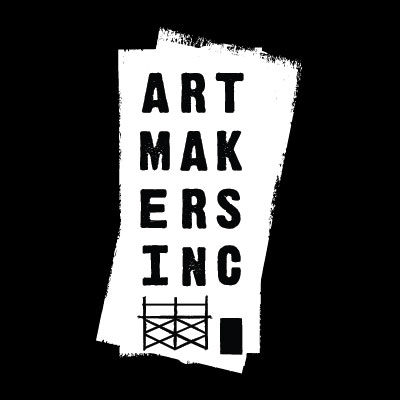26. The Frontera (The Border)
EVA COCKCROFT & A. G. JOE STEPHENSON
1986, 10’ x 11’
Photo © Estate of Eva Cockcroft
Eva and Joe were well versed in immigration issues, in part due to frequent visits to California and New Mexico—where, in the late 1980s, they both settled: Eva in Los Angeles and Joe in Albuquerque. Speaking of la migra or immigration, Joe describes La Frontera (The Border) as showing “the unlucky border crosser who, caught in the glare of helicopter search lights, is stopped and then led away by border agents. Meanwhile, the family—dependent on his earnings—nervously waits for news. Today, that family might be law-abiding residents in the U.S. facing the threat of deportation.”
Illegal immigration was not a problem until the late 1960s, following the termination of the Bracero guest worker program. When, in the early 1980s, economic conditions worsened in Mexico, there was a surge in illegal border crossings, peaking in 1988. People seeking jobs or higher wages took advantage of previously established migrant networks and the growing availability of migrant smugglers known as “coyotes.” The desperation of the migrants often put their lives in jeopardy. Political turmoil in El Salvador, Guatemala, Honduras, and Nicaragua significantly contributed to this rise, with hundreds of thousands of people fleeing the violence of their homelands.
Under the pretext of fighting communism, President Reagan supported military interventions in Central America, declaring in 1986 that “terrorists and subversives are just two days driving time from Harlingen, Texas [in the Rio Grande Valley].’’
Border crossings and apprehensions have greatly decreased since 2008, making the need for the wall advocated by the current administration absurd. Drug smugglers find alternate routes to import drugs, and domestic terrorists are, for the most part, American citizens. Today, it is the immigrants living and working here for years—contributing to both the economy and community life—who are, without cause, rounded up in raids conducted by ICE (Immigration and Customs Enforcement).
As a muralist, Eva founded Artmakers in 1983 and painted murals in NY, CT, NJ, CA, Nicaragua and Germany. As a writer she advocated for murals as a means of social change (Toward a People’s Art and Signs from the Heart: California Chicano Murals as well as numerous essays). As a teacher, she taught in universities and was a beloved mentor to many muralists. Eva died in 1999 of breast cancer.
A co-founder of Artmakers, Joe lives in Albuquerque, working with Working Classroom Inc. where he started a mural program in 1992. He is leading two mural projects at Tierra Adentro Charter School where he teaches art to middle and high-school students. Since 2005, he’s been a scenic artist at the National Hispanic Cultural Center and is a finalist for the city’s Public Art Urban Enhancement Program (“Nob Hill is 100”).






